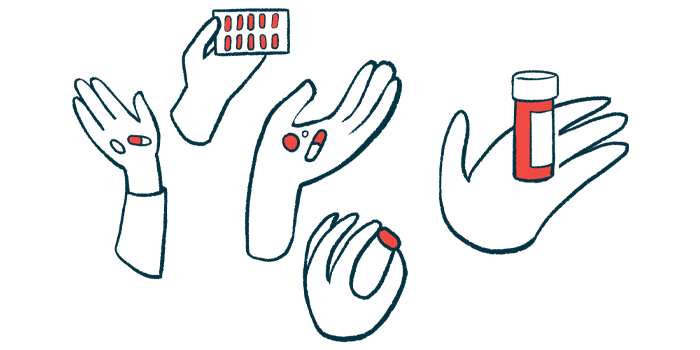Stopping glucocorticoid therapy not tied to flare-up risk, data show
Data on dose target unclear, researchers say
Written by |

Discontinuing glucocorticoid therapy after achieving remission did not increase the risk of symptom flare-ups in people with systemic lupus erythematosus (SLE).
That’s according to data presented at the 2024 European Alliance of Associations for Rheumatology (EULAR) congress, as announced in a EULAR press release.
Data also showed that two upper-limit glucocorticoid dose thresholds — 7.5 or 5.0 mg per day — offered similar protection against flare-ups, irreversible organ damage, and mortality.
Anti-inflammatory glucocorticoids are a standard treatment for SLE, a chronic disorder marked by an abnormal immune response against the body’s own healthy tissues. Because long-term use of glucocorticoids can lead to serious side effects, dose reduction is becoming an essential part of SLE management.
Still, data regarding the optimum glucocorticoid dose target is conflicting. EULAR recommends no more than 5 mg per day, while the threshold in the validated lupus low disease activity state (LLDAS) definition is no more than 7.5 mg per day. It also remains unclear whether withdrawal from glucocorticoids after achieving remission is feasible and safe.
In a presentation titled, “Glucocorticoid withdrawal does not increase the risk of flares during remission in systemic lupus erythematosus,” researchers in Italy investigated the risk of symptom flare-ups in SLE patients who were in stable remission. They also compared the risk of flare-ups among patients who stopped glucocorticoids with those who remained on a maintenance dose despite being in remission.
Flare-free remission
During follow-up, 484 patients achieved remission at least once. Of these, 360 (74.4%) discontinued glucocorticoids, while 124 (25.6%) remained on a dose of 5 mg per day or less.
Over a mean of 87 months (7.25 years), 85 flare-ups were reported. Of these, 48 occurred in those who had discontinued glucocorticoids (0.13 flares per patient), and 37 in patients who were on a glucocorticoid maintenance dose (0.29 flares per patient).
The annual flare rate per 100 participants was significantly lower among patients who stopped taking glucocorticoids than in those who continued (1.65 vs. 8.5). Similar results were obtained when researchers considered only patients in durable remission (lasting more than two consecutive years).
Further analysis revealed that patients who were off glucocorticoids achieved a higher rate of flare-free remission.
During clinical remission, glucocorticoid “discontinuation after proper tapering is safe and associated with a low risk of flare,” the researchers wrote, noting that glucocorticoid. “withdrawal does not increase the risk of flares.”
No evidence for lowering dose threshold
The second talk was titled, “Impact of glucocorticoid dose threshold in the definition of lupus low disease activity state.” Here, a team led by researchers in Australia explored whether lowering the LLDAS dose limit (7.5 mg per day) to the EULAR upper dose threshold (5 mg per day) was associated with increased protection from flares, irreversible organ damage, and mortality.
Among the 2,213 SLE patients who had at least two years of follow-up data, 1,485 (67%) experienced mild to moderate or severe flares, 590 (29%) accrued organ damage, and 46 (2.1%) died.
In 15,888 (47%) visits, 1,933 (87%) patients reached an upper LLDAS glucocorticoid dose of 7.5 mg per day (LLDAS-7.5). In comparison, 1,829 (83%) patients attained an upper limit dose of 5 mg per day (LLDAS-5) in 14,407 (42%) visits.
There was considerable overlap between the two groups, with most patients in the LLDAS-7.5 group also being part of the LLDAS-5 group. A total of 104 patients attained LLDAS-7.5, but never reached LLDAS-5.0.
Nevertheless, data showed that both glucocorticoid thresholds provided similar protection against flare-ups, irreversible organ damage, and mortality.
“Lowering [glucocorticoid] dose remains a key goal of management in SLE, but no evidence was adduced to support revising the [glucocorticoid] dose threshold of the LLDAS definition,” the researchers wrote. “The validated LLDAS definition should continue to be used in studies and patient care.”







